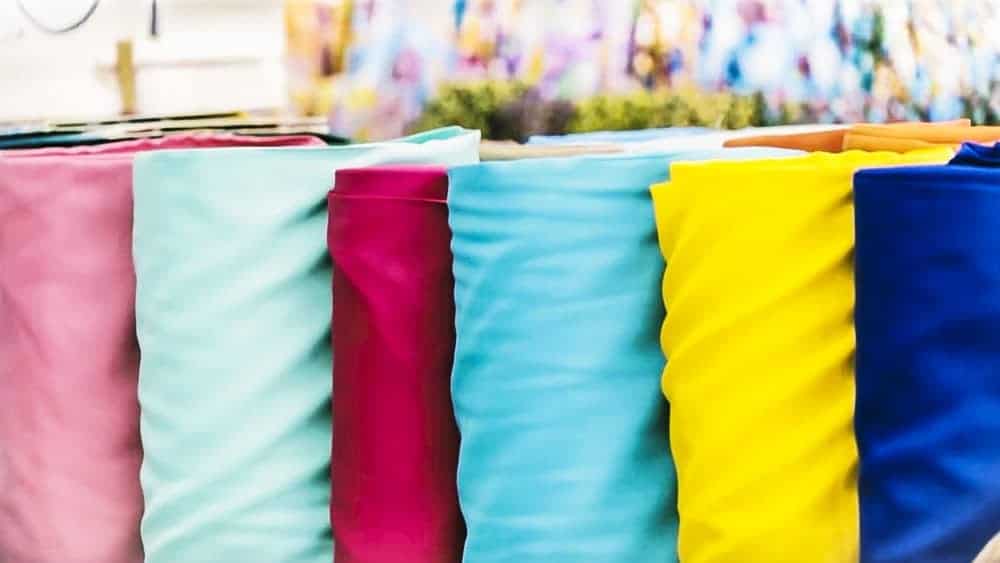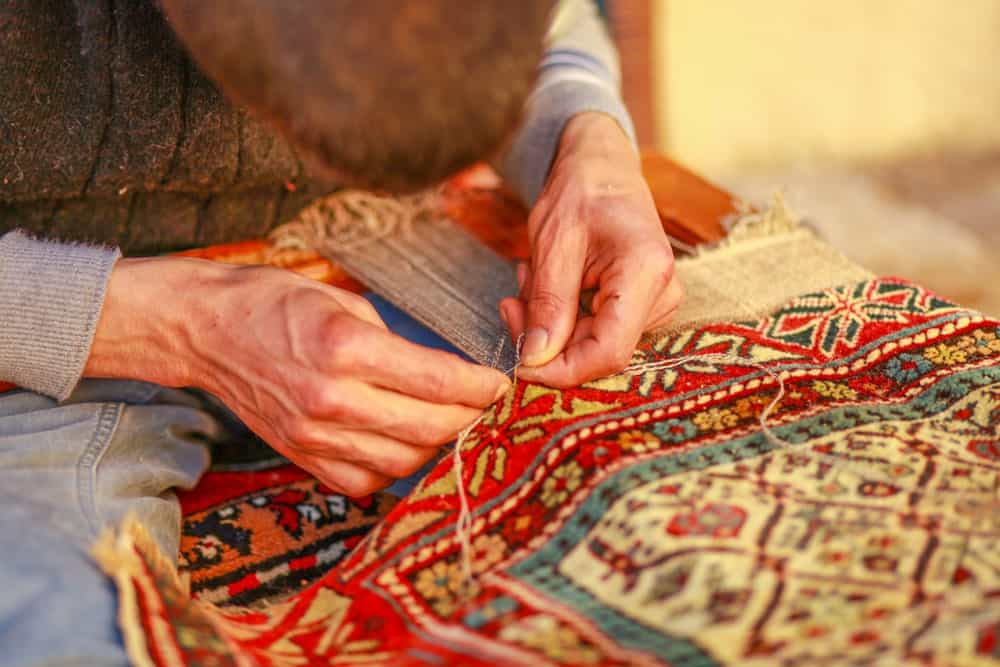There are many different cloth textures that are added to fabric to give it a unique look and feel. These textures can be mixed and matched or can be paired with the same fabrics, like pairing denim with denim. These textures can go together to create beautiful outfits for your wardrobe.

What is cloth texture?
Cloth textures are a non-uniformity in the fabric, usually due to the type of fiber, material and spinning process. For example, ring spun yarns have more texture than combed top yarns. Texture dictates how it feels on your skin as well as appearance.
Contents
- History Of Clothing and Textures
- Three Weave Types
- 11 Common Fabric Textures
- Less Common Clothing Textures
- Frequently Asked Questions
- What is an example of texture?
- How do you mix clothing textures?
- What fabrics go well together?
- What is the difference between texture and pattern?
- How many different types of clothes fabrics are there?
- Why is fabric texture important?
- What is the thin, see-through fabric called?
- What is the difference between fabric and fiber?
- What are the fundamentals of texture that bring out the difference in them?
- What are the three kinds of texture?
- How are you mixing textures in your outfit?
- Which texture do you use the most?
- What is the difference between fiber and yarn?
- Can you wear linen and silk together?
- What is Arnel vintage material fabric?
- What fabric is used for dresses?
- What is the thinnest clothing material?
- What are the highest quality fabrics?
- What is the most expensive fabric?
- What is the thinnest, most breathable fabric?
There are many different cloth textures used in men’s and women’s clothing. The fabric texture is the way the surface of the fabric looks and feels. It can enhance the quality of your clothes, as well as add dimension and unique character. It can sometimes show a visible unevenness like in corduroy or twill or may appear smooth, like in silk or jersey fabrics.
Different fabrics are used for different types of clothing. They can be mixed and matched or paired with similar textures and fabrics. Depending on the clothing, decides what type of fabric and textures are used.
For example, summer dresses may be made from jersey, silk, or seersucker light texture because they are thin, made from cotton, and are usually cooler fabrics. You wouldn’t want to wear a cashmere or velvet dress in the middle summer, would you? You can also mix some styles for a different look, like a flannel shirt with corduroy pants.
Or match different textures together, like pairing a denim jacket with denim jeans. Also, different textures with different patterns will create different looks. We’ll discuss the different types of textures and fabric that make up the different clothing men and women wear.
I tend to like less textured fabrics like cotton and denim as my go-to textures for an outfit. I also like wool and knitted garments that I can make myself or buy at any store. As there are many different textures and fabrics, you may have to go to a specialty store for certain ones, but most can be found at any craft store if you’re looking for a do-it-yourself project.
If you’re looking for a finished garment with any of these textures, you can find them in any store near you or on-line.
History Of Clothing and Textures
Before discussing the different types of fabric textures, let’s first talk about the history of clothing. Anthropologists believe that the first clothing types were made from animal skins and vegetation to protect the people from the weather. Other textures and textiles were invented as a necessity.
This depended on the different cultures and what their need was. For example, Ancient Egyptians created linen, used them for mummification, and made clothes like kilts and dresses.
Different cultures approached fabric in different ways. They were influenced by the climate, fashion, religion, and the ecosystem. Some cultures may have developed fabric for one thing, and other cultures would use it for something entirely different.
Some of the first textures and fabrics created were leather, cotton, linen, and silk. They were first rough and straightforward, but with advanced technology, fabrics have become more beautiful and comfortable to wear.
Three Weave Types
Weave types create different textures and are the main weaves found in fabrics. When you think of textured fabric, you might instantly think of corduroy trousers or a fur coat. However, how the texture is determined is by the weave. Three weave types make up the textured fabric. They are:
Twill

Twill weave has a very delicate diagonal rib pattern. Twills are often a dark color on the front side, or wale, and lighter on the back. Denim, tweed, and houndstooth are all a type of twill weave.
Satin
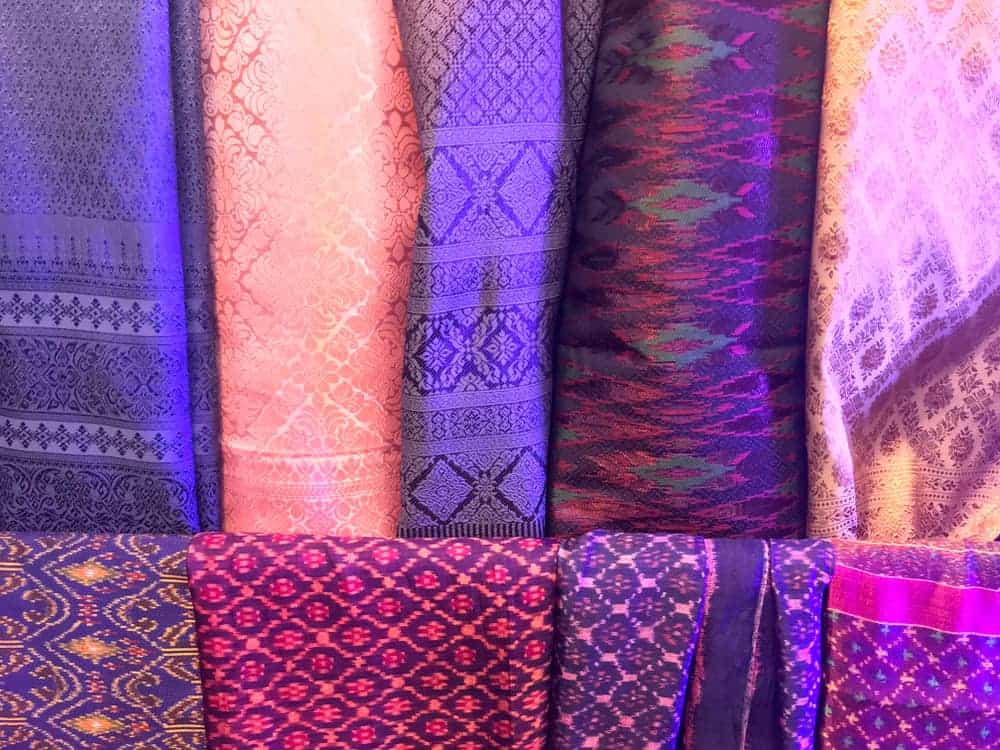
Satin weave is a shiny, soft, and elastic weave with a beautiful drape. It adds shimmer to one side of the fabric, while the other side is flat. This fabric weave is often used for couture-style dresses, clutches, and suits.
Plain
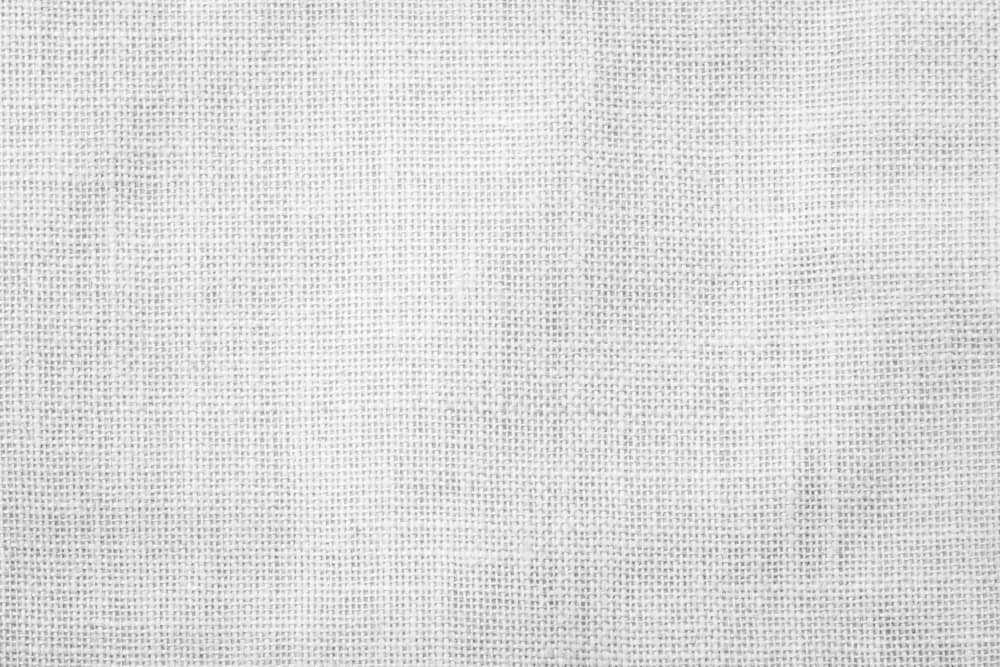
Fabrics like canvas, taffeta, and muslin are plain weaves. They are created by overlapping the vertical and horizontal threads of the fabric and right angles. This forms a criss-cross pattern that looks the same on both sides of the fabric. Plain weaves create garments like dresses and skirts.
11 Common Fabric Textures
Within the weave types, different textures create different fabrics. There are many different textures for fabric, but some are more common than others. The 11 most common fabric textures are:
Denim
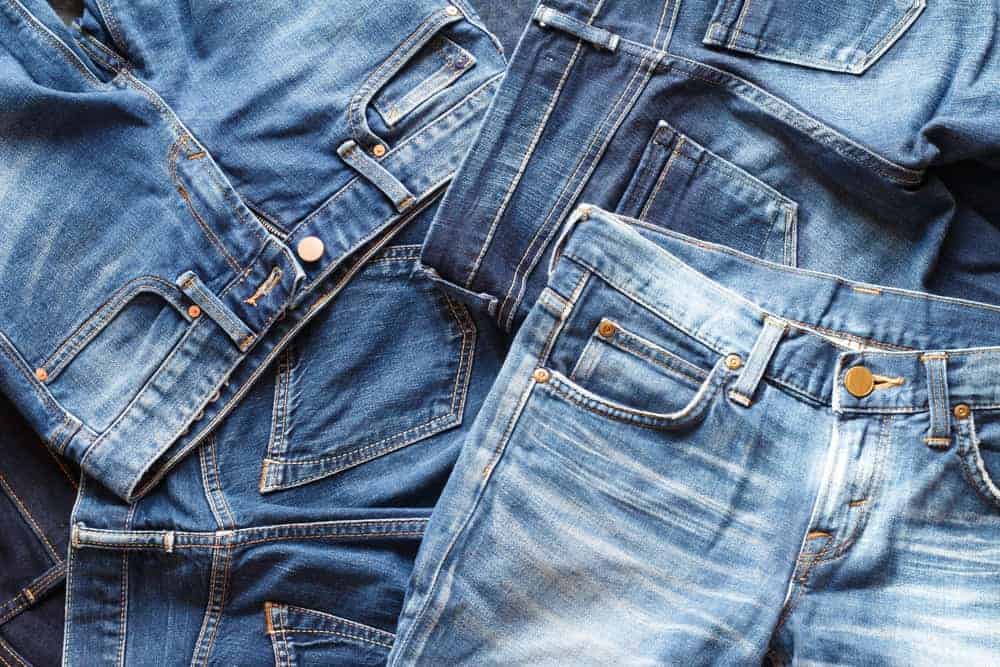
Denim is a strong cotton fabric with a twill weave that provides a subtle diagonal ribbing pattern. The diagonal ribbing is what makes denim different from canvas fabric. Denim is mostly used for jeans but can also be made into shirts and dresses. Although denim may appear rough, it becomes soft and comfortable as you break it in. Don’t you have a favorite pair of jeans?
Broadcloth

Broadcloth is a plain weave fabric that was traditionally woven from thick wool yarn. Today it is now made with blended cotton fibers. As the fabric is being made, the fibers felt together, creating a sturdy, stiff, and resistant fabric to wind and water. It is used to make shirts, skirts, and blouses.
Seersucker
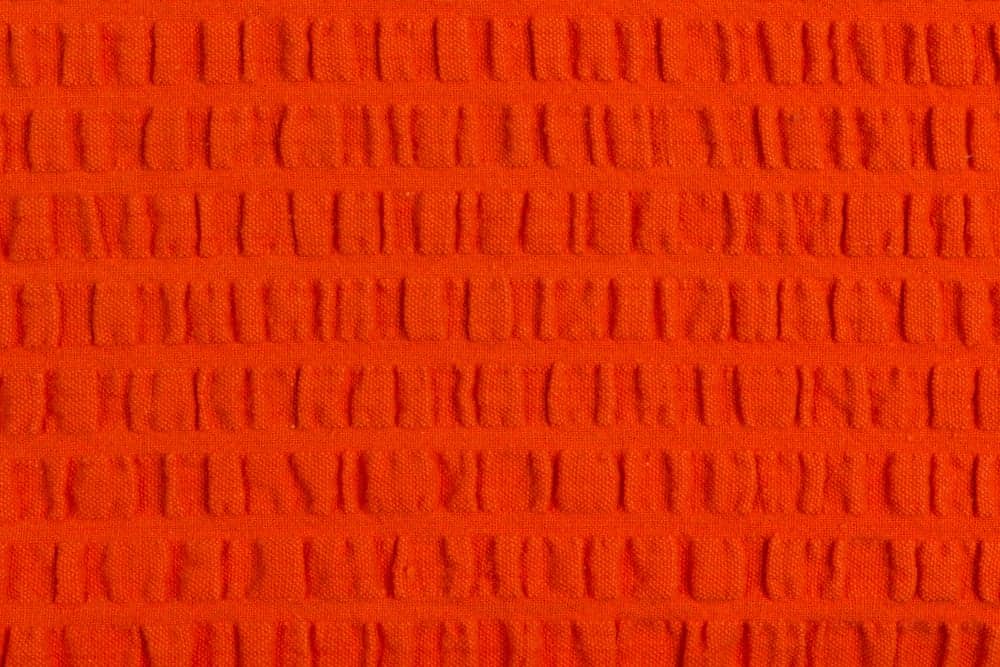
Seersucker is a type of thin cotton cloth texture. Its woven in a way that causes the thread to wrinkle and bunch, creating crinkles in the fabric. The cotton is deeply dimpled, which creates a gauze effect, allowing air to pass through the fabric easily. It often comes in the colors of white and blue stripes, and because of it being a thin cloth, it’s most popular for summer clothes, like dresses and shirts.
Corduroy
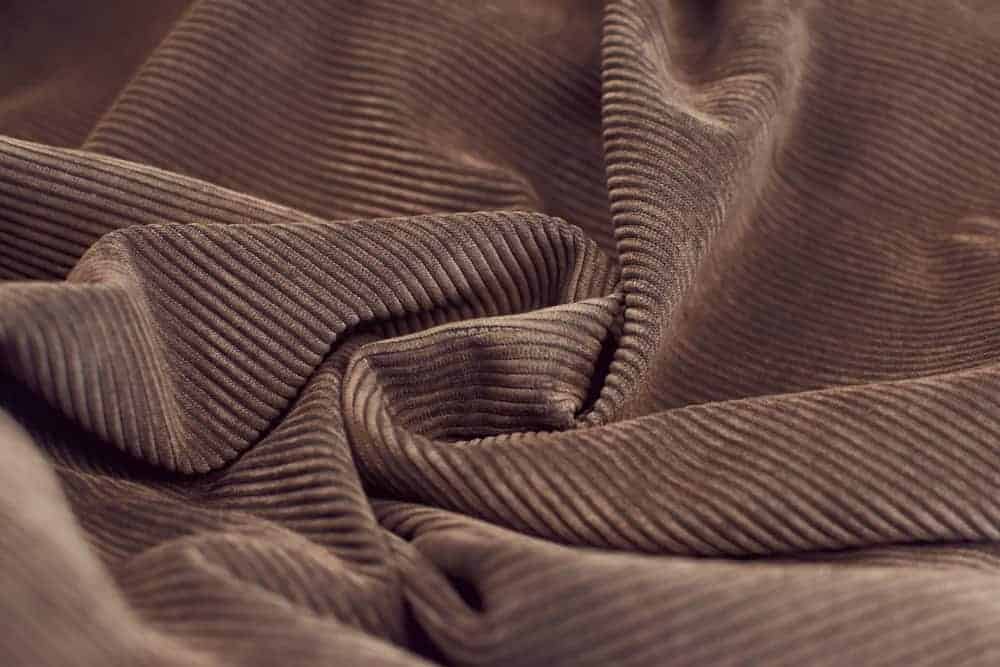
Corduroy is a soft, durable fabric with visible verticle ridges. The verticle ribbing, called wales, gives corduroy a unique texture and is often tufted, making it a fuzzy feeling. Its typically made from cotton but can also be made from wool. Because it’s a heavy fabric, corduroys are perfect for fall and winter. Wider wales are sturdier and are often used for pants, blazers, and overalls. Finer wales are often made into shirts and jackets.
Leather
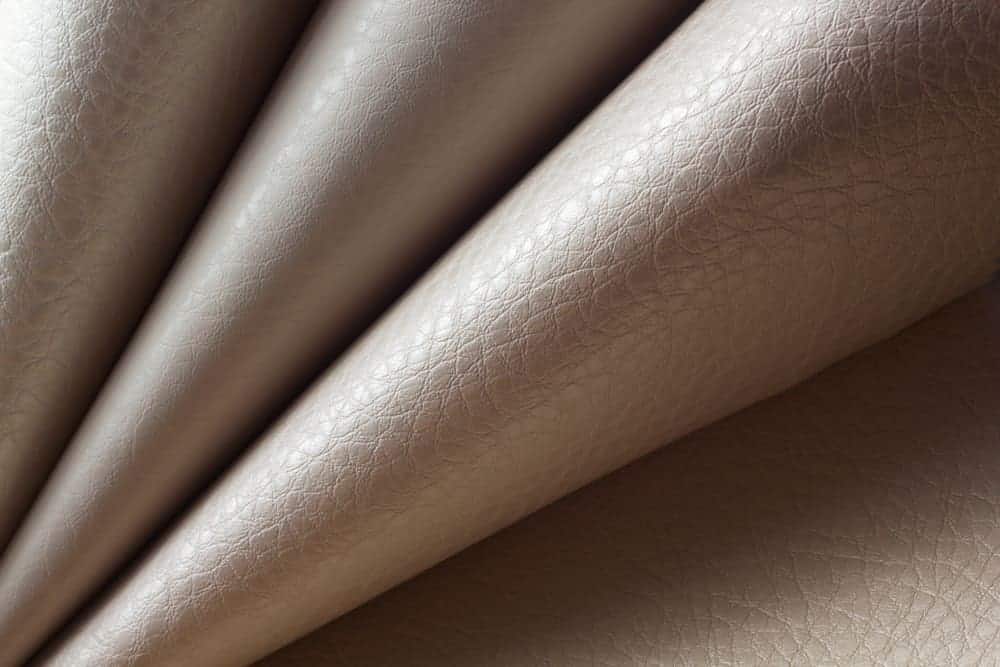
Leather fabric is made from the hides and skin of animals. The hides and skin are treated with chemicals to preserve them. This process is called tanning. Most often, the animals to make leather are cattle, oxen, sheep, goats, horses, pigs, alligators, and more. Cowhide is the most popular leather. Items made from leather include jackets, pants, and accessories like wallets or purses.
Suede
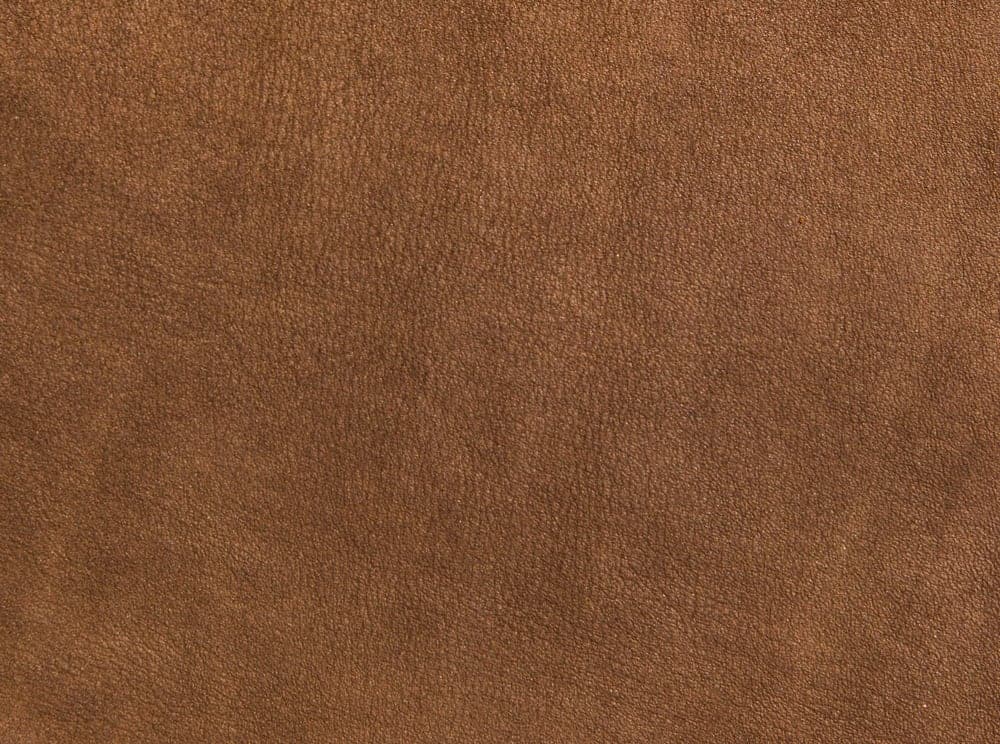
Suede is a kind of leather made from animal skins’ soft underside. It is often made from animals like lamb, goats, pigs, calves, and deer. It is softer, thinner, and more delicate than traditional leather. It is also of a higher quality and longer-lasting, but not as strong as traditional leather. It is perfect for footwear, jackets, and accessories like belts and bags.
Brocade

Brocade is a jacquard fabric style, or woven style, that uses different threads to create a raised pattern, resulting in an embossed or embroidered effect. Weaving yarns like silk create an intricate design using a loom. Due to the technology used to make it, it is not reversible and may appear rough or unfinished on the back.
The fabric patterns are usually simple shapes like scrolls, flowers, or animals but can be more intricate. Brocade usually has a twill or satin background and is thick and heavy. They are often used to make costumes, dresses, ornate jackets, and evening wear.
Silk

Silk is a natural fiber produced by a silkworm. It is incredibly durable and has a shine and softness to it that you can’t find on any other fabric. It’s often used for formal clothing and accessories like pocket squares.
Cashmere
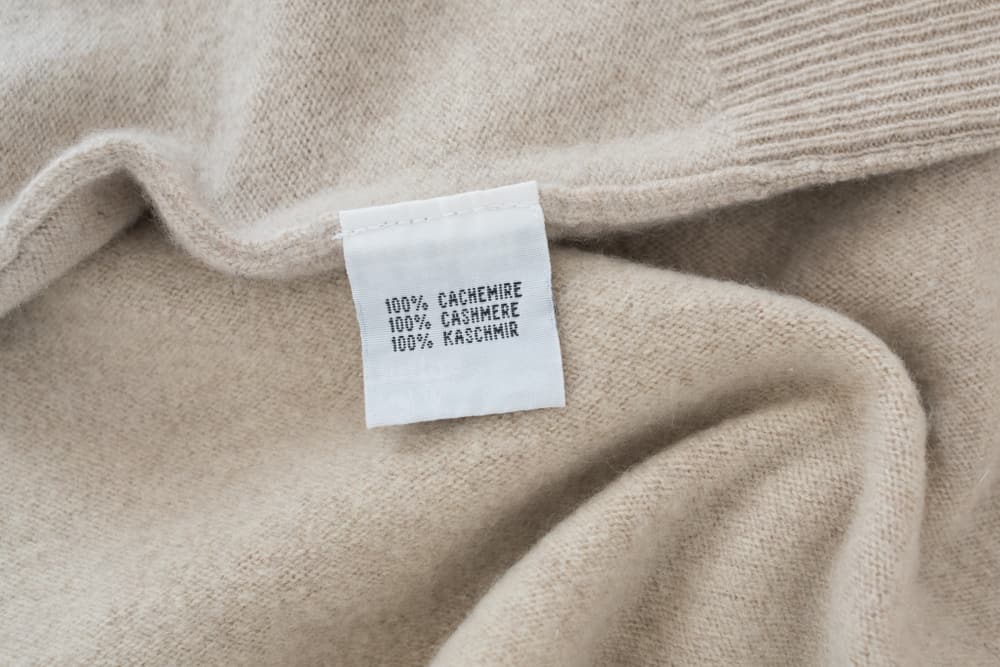
Cashmere is created from the wool of cashmere and pashmina goats. The fiber is natural, soft, and has excellent insulation properties. It is warmer and lighter than the cloth made from sheep’s wool. It can be blended with other wool types, like merino, to provide added weight because it is a light fabric. Cashmere is a high-end fiber and can be woven or knitted into sweaters, coats, pants, and accessories like shawls, gloves, and scarves.
Jersey
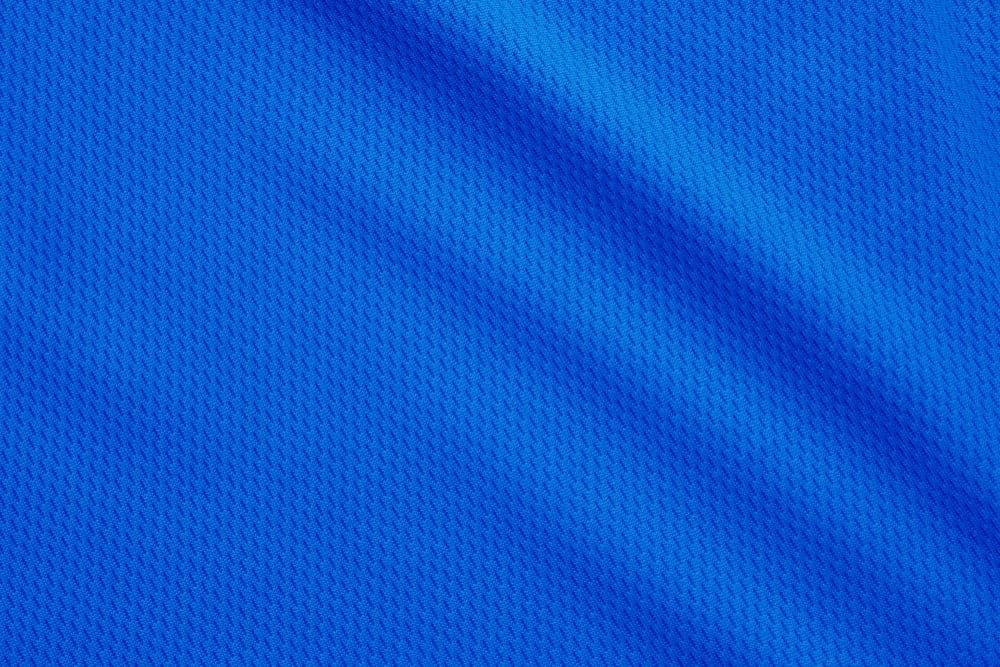
Jersey is a soft, stretchy knit fabric that used to be made from wool. It is now made from cotton, cotton blends, or synthetic fibers, which drove down the fabric’s cost. It is either light or medium weight, absorbent, breathable, and well-structured. It is a popular fabric and is used to make various clothing like t-shirts, tank tops, sweats, underwear, and sports attire.
Flannel
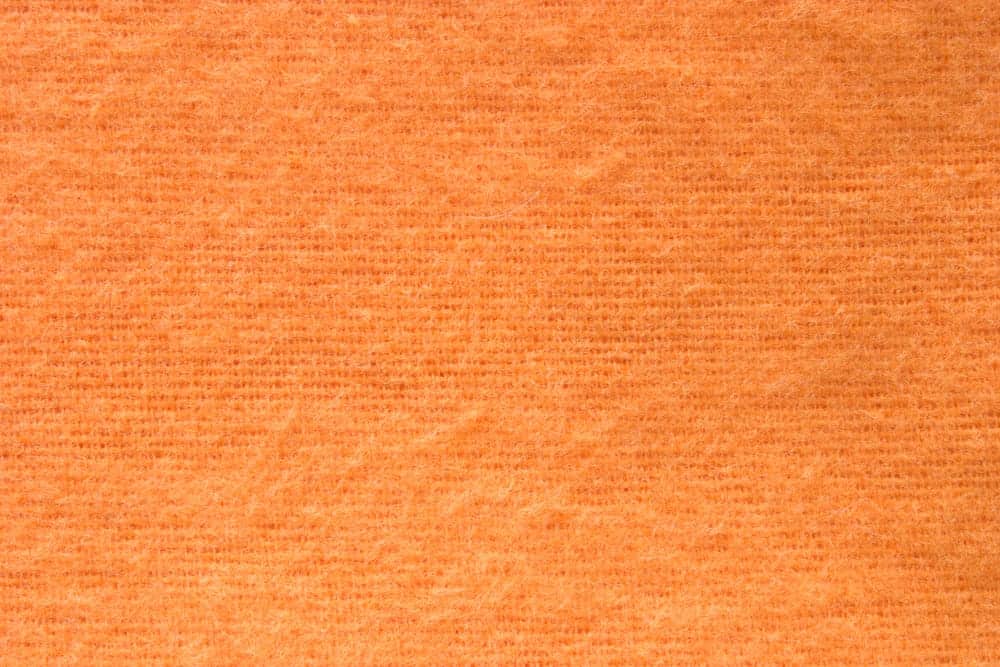
Flannel is a soft, medium-weight, woven fabric that is typically made from cotton. It has a napped, or fuzzy, finish on either side, making it a perfect fabric to wear during cold or winter months. It is a common material for plaid shirts but can also be made into dresses.
Less Common Clothing Textures
Although the textures listed above are most commonly known, other textures are used to create different garments. These textures are:
Pre-Pleated Fabric
Fabric is pre-pleated using heat and chemicals. The pleats may be random or created at regular intervals. Different techniques are used to create pleatings, like hand pleating, machine pleating, and form or paper pleating. Pleated fabrics add texture and volume to the finished garment. Silk chiffon is a pre-pleated fabric.
Shirred or Smocked Fabrics
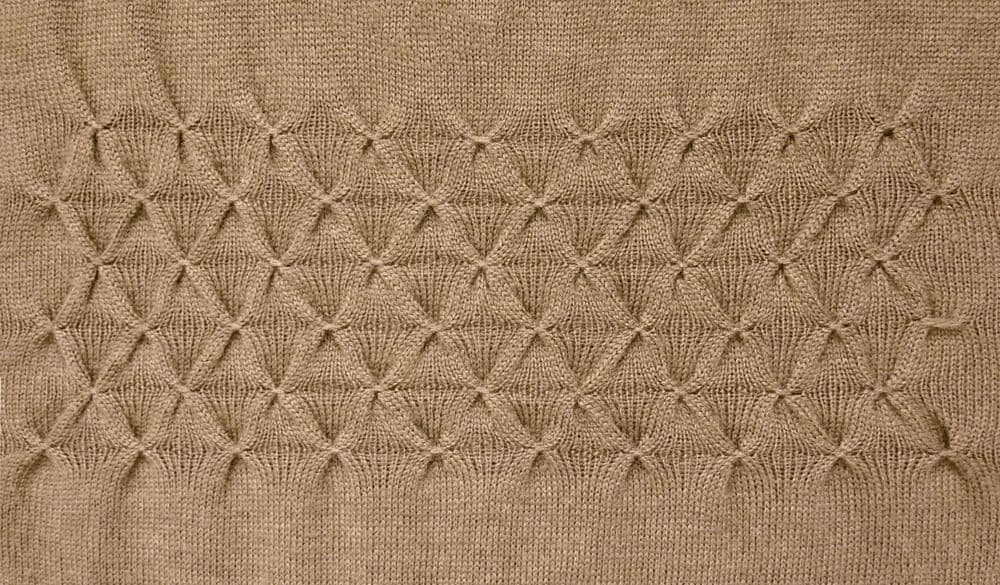
Shirred or smocked fabrics have a unique texture like swirls or pinwheels made as a result of being stitched. Smocking creates small pleats on the fabric, and embroidery stitches are created on the top to hold the pleats in place and for embellishments.
Pre-Quilted Fabrics
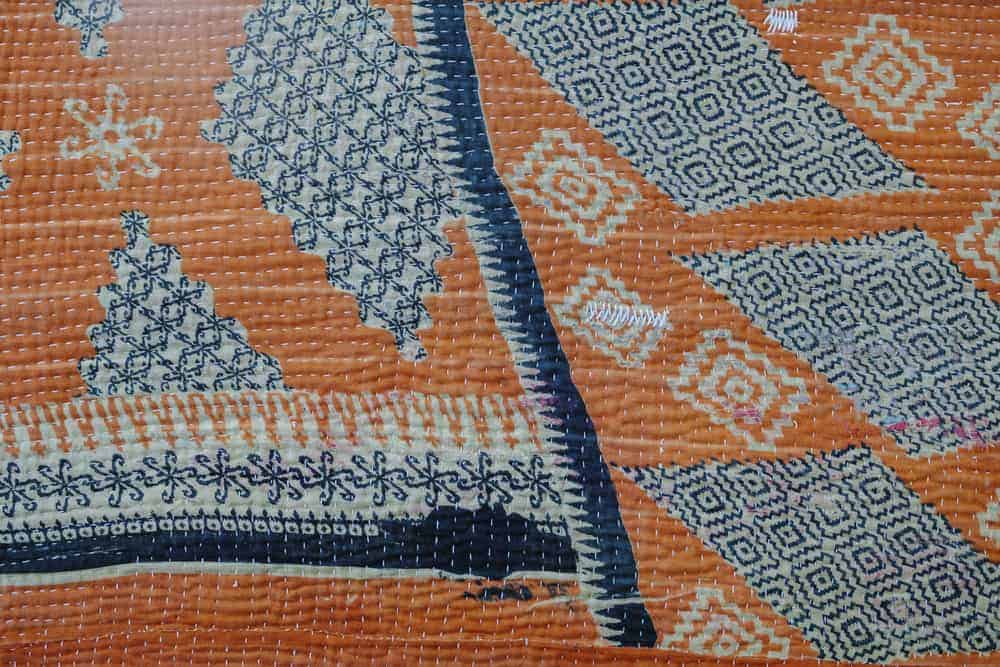
Pre-quilted fabrics involve stitching two fabrics together with padding or batting in between. These fabrics are often used for making jackets and bags.
Crepe
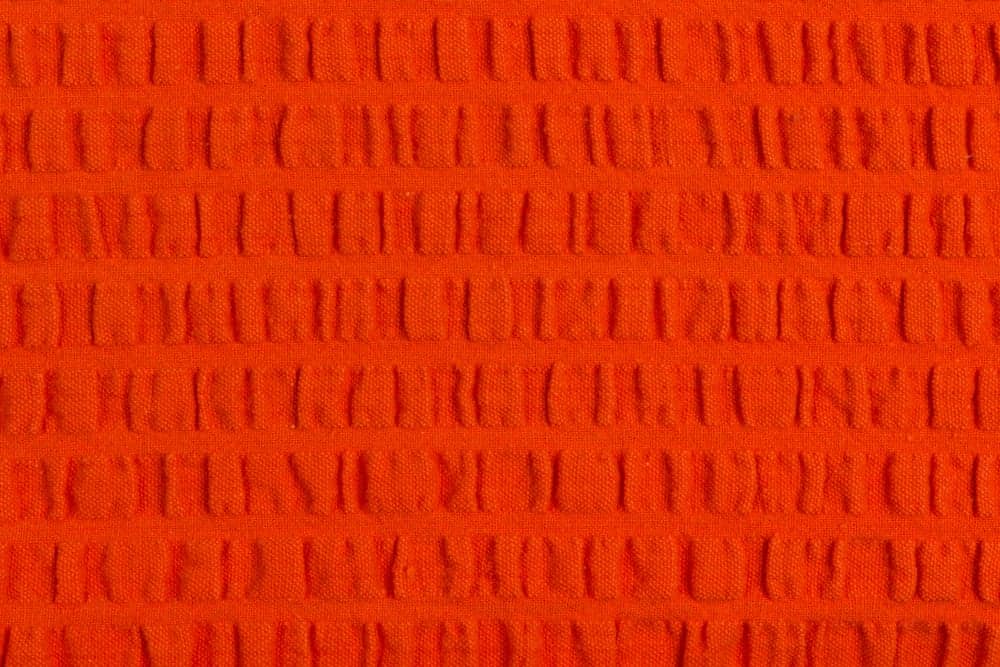
Crepe fabrics have texture, but not all are pronounced. Some crepe fabrics include:
- Canton crepe – heavily textured surface with a visible crosswise ribbing
- Satin crepe – has a beautiful texture on the back, which can also be used as the fabric’s face.
- Morrocan crepe – have a wavy weave.
- Crinkle crepe – has a plain and crepe surface.
- Wool crepe – has a bumpy surface texture because twisted crepe yarns are used in weaving the fabric.
- Plisse – has a lightweight and puckered appearance. It is made using a chemical treatment that shrinks portions of the fabric resulting in a puckered look.
Hammered Satin

Hammered Satin is a type of satin crepe embossed to give the fabric’s surface a unique, pebbly texture, similar to hammered metal. It’s often used to make dresses and for upholstery.
Net Fabrics

Net is an open weave, sheer fabric that is made with yarns. The yarns are knotted or twisted together to provide a texture that looks like a square, hexagonal or square, octagonal meshes to create the netting. Fishnet is a standard net fabric that can be used to make bags.
Lace

Lace is a human-made or machine-made textile. It is delicate and beautiful, with an embossed surface with intricate designs that are often floral looking. Lace can be used to make shirts, dresses, skirts, and lingerie.
Faux Fur
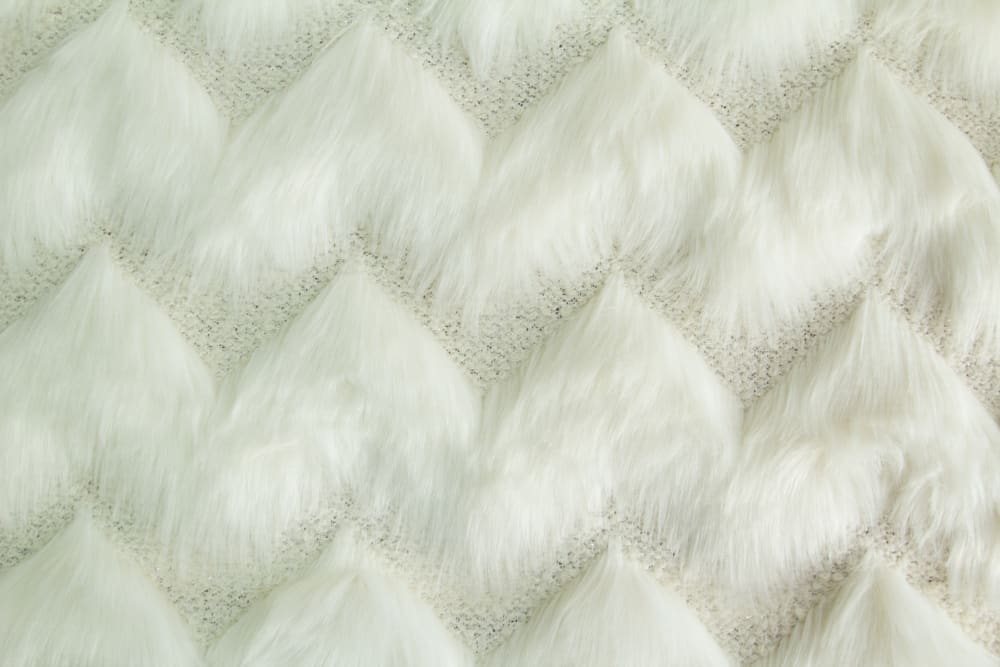
Faux fur fabric looks like they’re made from the fur of animals but is not. They have a dense, piled surface texture with a knit background. They are often used to make faux fur coats.
Embroidered Fabric
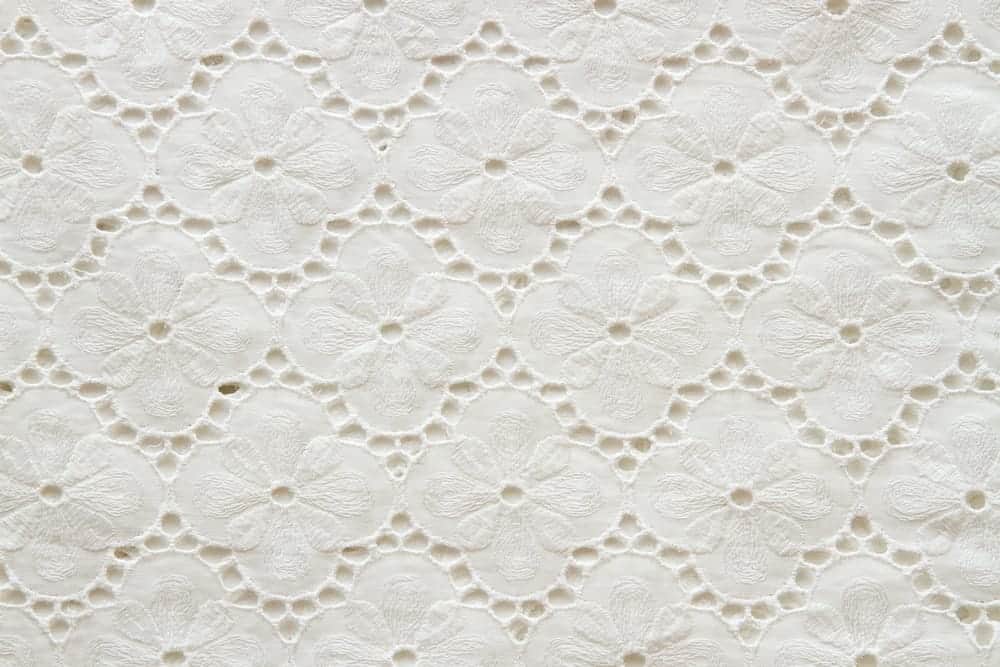
Embroidery is added to tightly woven, non-textured fabrics. Any fabrics can be embroidered. Fabrics like net, velvet, and chiffon can be embroidered.
Double Knit Fabrics
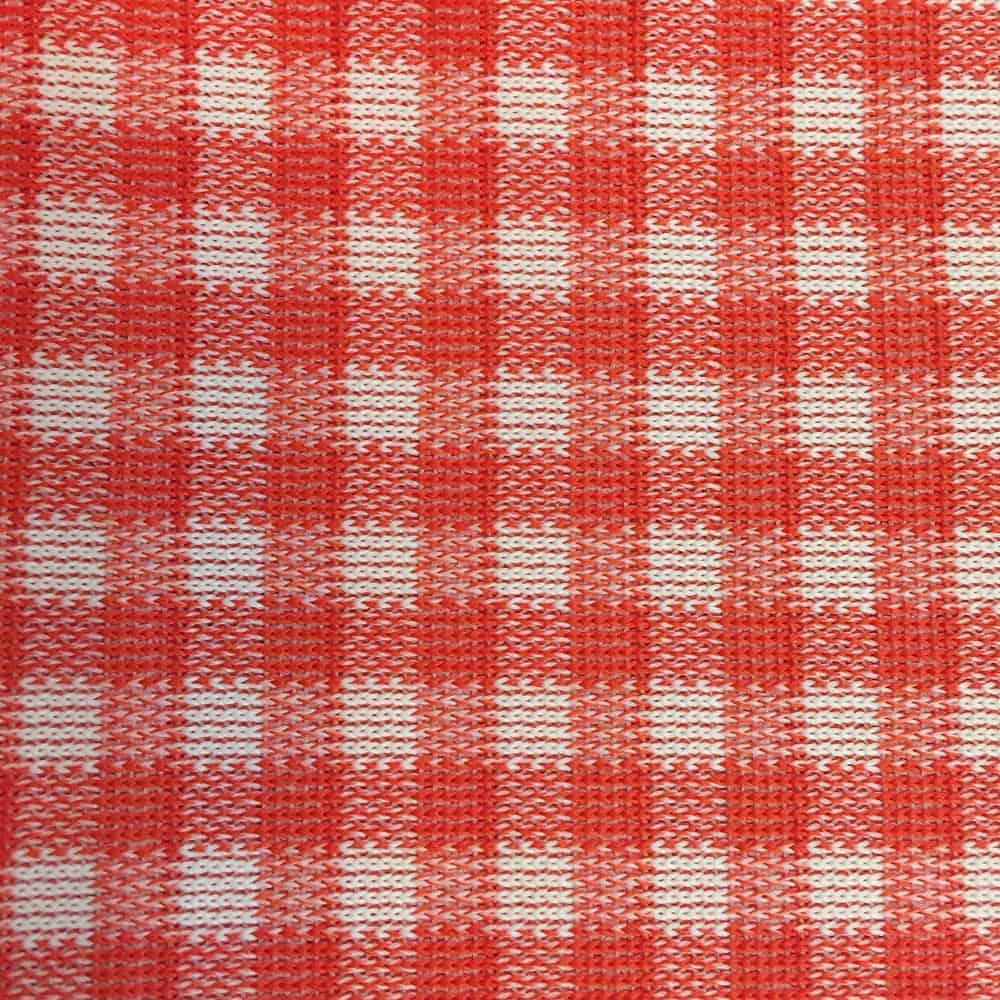
Double knit fabrics have a puckered surface. They are soft and puffy and made with double cloth, which makes them look like its padded. The surface texture often has puckered patterns like florals, geometric shapes, and medallions. These types of fabrics are often used in suits or for bedding.
Wool
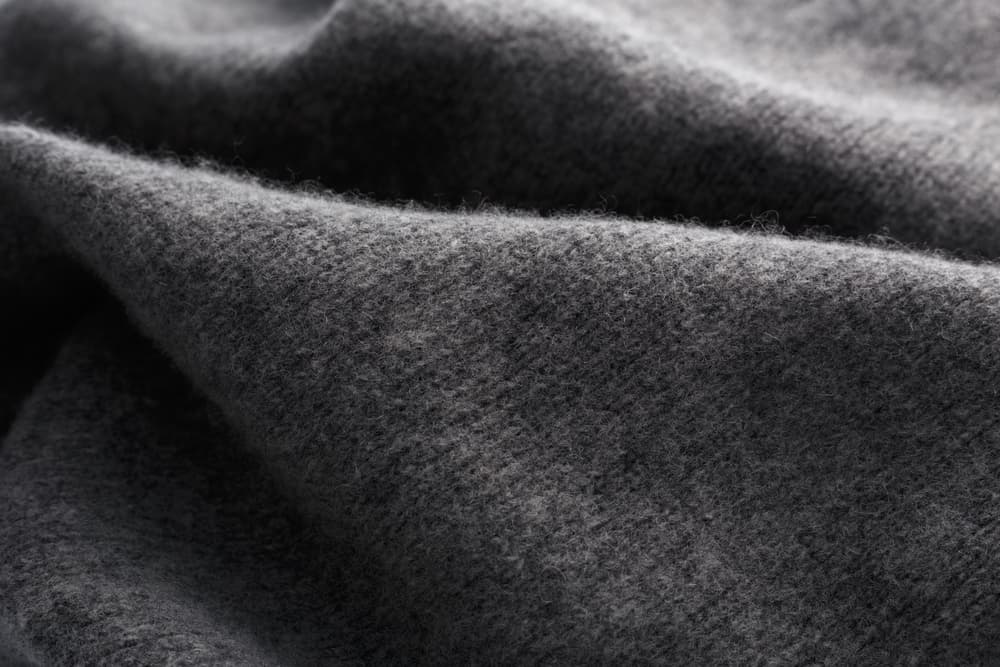
Wool is a fabric made from the fleece of sheep or goats. The hair is converted into woolen fibers and is then woven or knitted into fabrics creating beautiful textures. The texture is fuzzy, chunky, and soft.
Felt

Felt is a dense, textured cloth made by rolling and pressing wool or other natural fibers. Moisture or heat is applied to the wool or fiber with added pressure and then is rolled and pressed to create the felt.
Tweed

Tweed is a rough, heavy wool fabric. Tweed is sometimes created with a mix of colors. The weave of the fabric also has a twill or herringbone pattern that creates a more textured look.
Velvet, Velour, and Plush
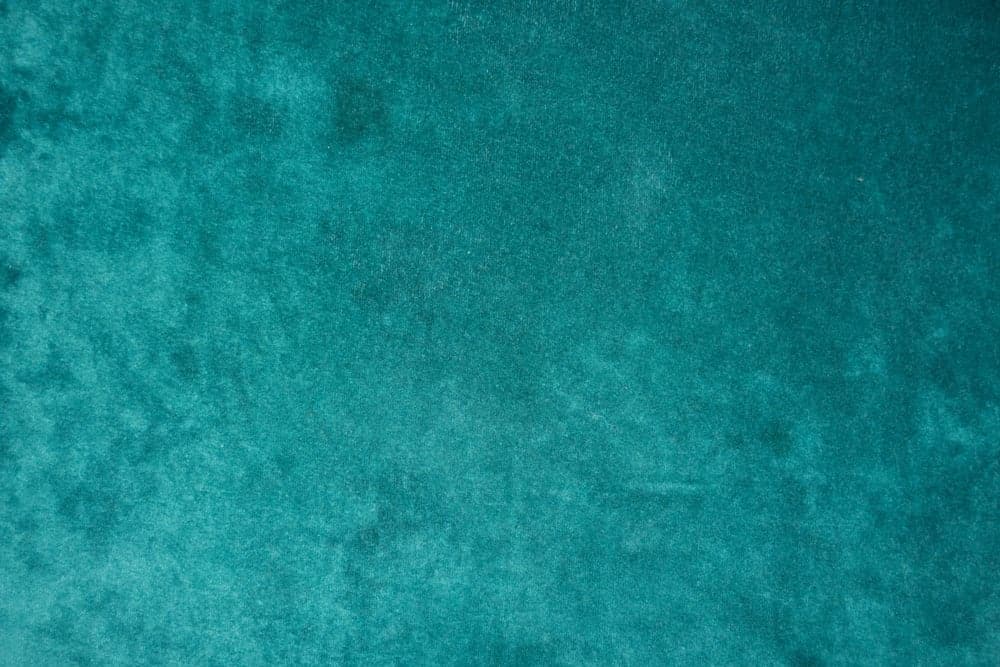
Velour is a knit fabric with evenly cut piles of fabric that create a soft, plush appearance. Velvet is a woven fabric created in the same way as velour. Both velour and velvet can be made into a crushed finish like crushed velvet.
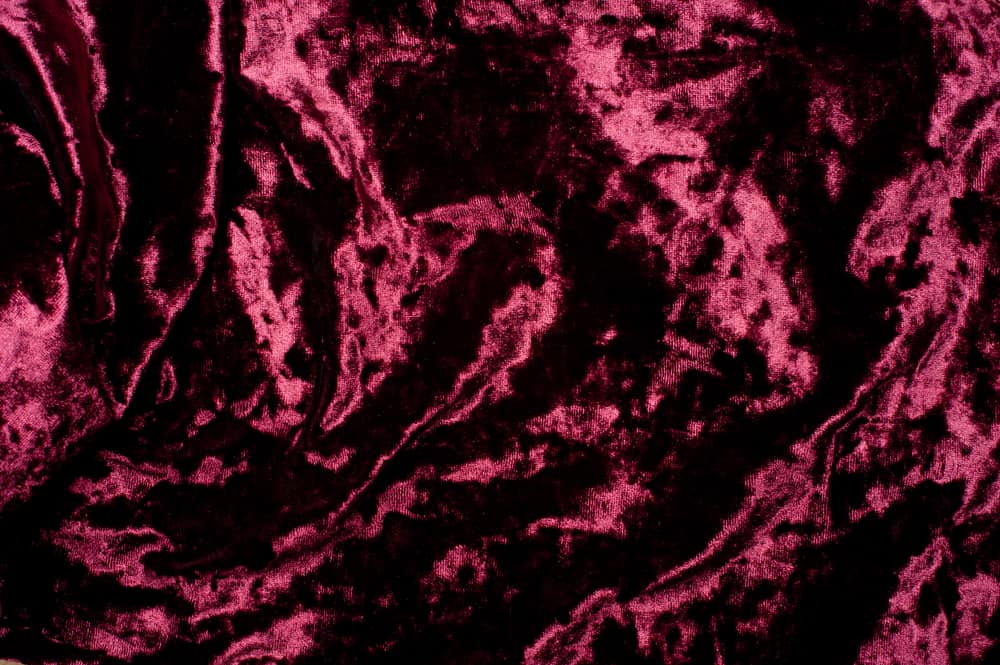
Crushed velvet has different color variations due to the differences in light reflections that give it more texture. There is also burnt-out velour or velvet that has been printed with acid, so the base fabric is visible in select areas.
Sweater Knits

Sweater knits are knitted using bulky yarns in different patterns that make unique textures for different sweaters.
Jacquard Woven Fabrics

Jacquard fabrics have an intricate, variegated raised pattern. Many jacquard fabrics are a rich woven fabric that is typically made of solid or multi-colored silk threads.
Ribbon Knit
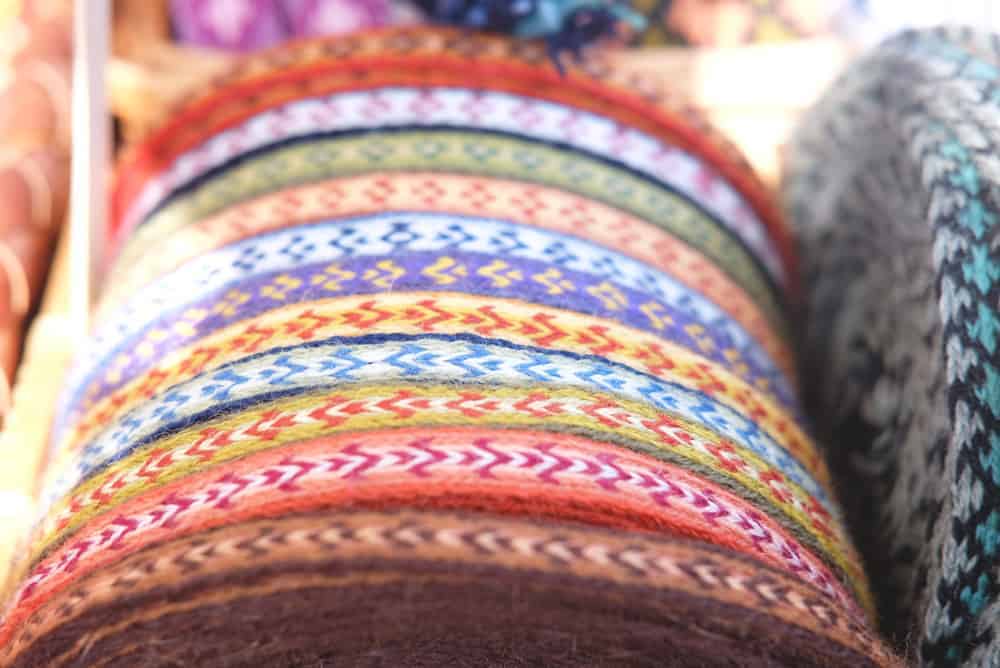
Ribbon knit is a knit fabric that has a beautiful texture made from ribbon or yarn loops. Narrow or rayon ribbon is used instead of spun yarn. Cotton knit fabric is usually the background for the loop overlay.
Boucle
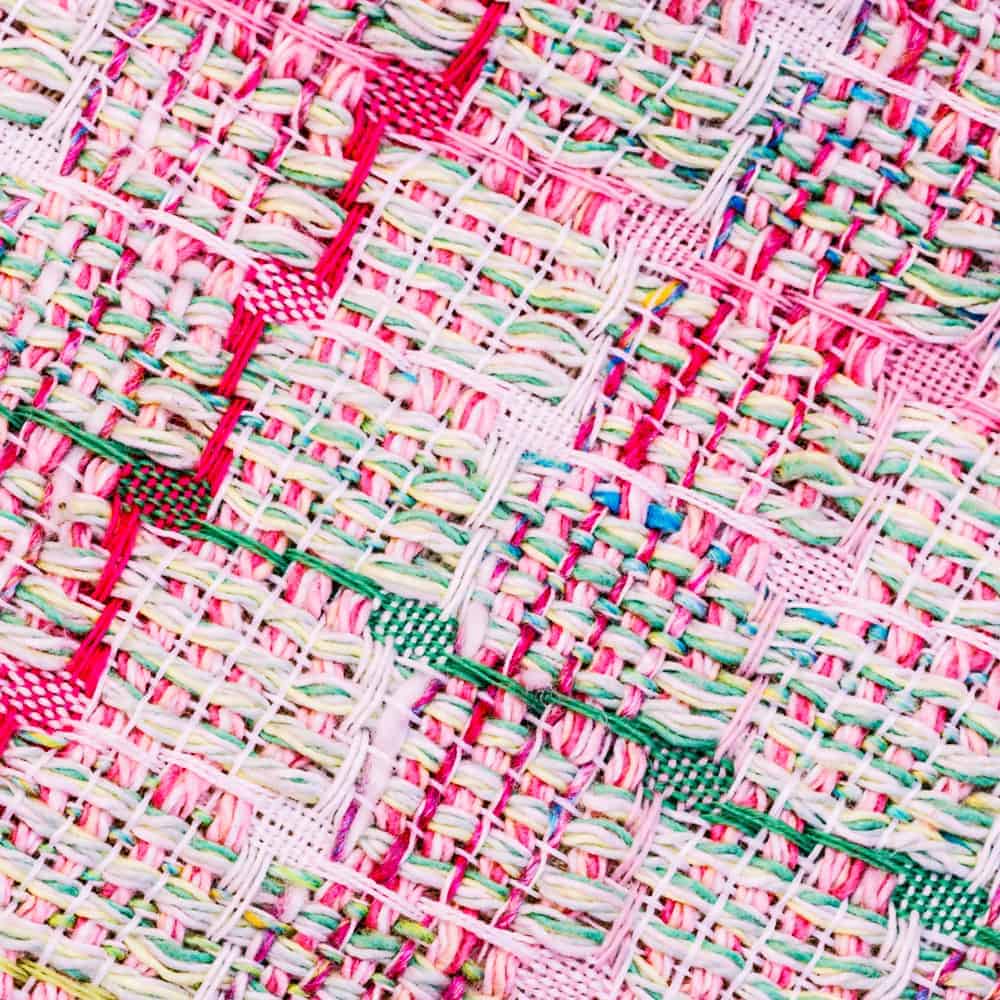
Boucle refers to fabrics that have small, spaced loops on the surface. The texture is made of chunky, natural, or synthetic fibers or a blend of fibers. Boucle has a looped texture made of different colored fibers.
Huckaback Fabrics
Huckaback is coarse cotton or linen fabric. This fabric has a small, distinctive weave texture made in a self-patterning weave. Its often used in embroidery and towels as its very absorbent.
Metallic
Metallic fabrics are made using metallic yarns. The metallic fibers are woven, braided, or knitted into fabrics to create a metallic shine. These fabrics have a shimmery, iridescence texture to them and can be as glam and textured as you want.
Frequently Asked Questions
What is an example of texture?
The texture is often determined by the type of weave the fabric has. Every piece of clothing has some texture. Texture can be different pleats, or creases, in the fabric to make corduroy or embossing or embroidery on the fabric like in brocade.
How do you mix clothing textures?
There are different ways you can mix clothing textures. First, you can identify neutral textures and pair them with more attention-grabbing textures. For example, denim, cotton, leather, and suede are basic textures that go well with many different textures. Another way to mix textures is to think about what type of vibe the textures evoke.
Silk is often seen as a luxurious fabric. When paired with jeans, it gives more of a relaxed look.
Another example would be a plaid flannel shirt. When paired with corduroy, you’re going for a comfy, warm look. When you add a black leather jacket to the mix, it becomes more serious. Another way to mix clothing textures would be to match your colors.
By sticking to a limited color palette, you have free range to use different textures with them.
What fabrics go well together?
Many fabrics go well together. Most are contrasting but not too different. Fabrics that work well together are:
- Cotton and denim – they look and feel similar.
- Cotton and linen – a cotton shirt with linen pants is stylish and comfortable.
- Wool and silk – wool is a warm, natural fabric. When mixed with a silk scarf, it brings a classy feel to your attire.
Sometimes, adding fabrics that are the same or similar works really well, like denim on denim or wool on wool.
What is the difference between texture and pattern?
Texture can be seen and felt. In comparison, a pattern is a repeating design on the fabric that can be seen but not felt.
How many different types of clothes fabrics are there?
There are over 200 different types of clothes fabrics.
Why is fabric texture important?
The fabric texture is important because it makes different fabrics unique. It creates the feel and looks of the fabric. It also may add dimension to the fabric.
What is the thin, see-through fabric called?
There are different types of see-through fabric. They can be gauze or chiffon and are often used to make stockings or lingerie.
What is the difference between fabric and fiber?
Fiber is a thin, thread-like strand. Fabric is made by weaving or knitting threads of yarn or fiber. So, fiber is what makes up different fabrics.
What are the fundamentals of texture that bring out the difference in them?
The differences in texture depending on the type of fabrics used and the type of texture. An embossed texture on cotton will look differently on denim.
What are the three kinds of texture?
The three main kinds of texture are:
- The original texture is the structure of the cloth that is created when the fabric is manufactured. The effect varies depending on the types of fibers used to make it, like yarn weight, stitch size, and yarn structure.
- The treated texture is the texture of the fabric that depends on the finishes applied to it. These finishes change the appearance of the fabric and increase its functionality. Some finishes include how the fabric is dyed or how it’s washed, like acid wash jeans.
- The supplementary texture is created by attaching other materials to the fabric’s surface after the fabric is made. An example would be embroidery on the fabric.
How are you mixing textures in your outfit?
There are different ways you can mix textures in your wardrobe. You can pair a cotton t-shirt or silk shirt with denim pants. Or wear a jersey knit dress with a cashmere shawl or leather jacket. There are so many different options to mix textures in your outfit. Do what works best for you and to what you like the best.
Which texture do you use the most?
Everyone is different and likes different clothes in their wardrobe. What kind of textures and clothing they wear most can most likely be determined by what climate people live in. People who live in warmer climates will probably wear lighter textures like seersucker, broadcloth, or jersey. In contrast, people in colder climates may wear more flannel, corduroy, or cashmere.
What is the difference between fiber and yarn?
Fiber is a thin, thread-like strand. Yarn is made up of fiber. So, fiber is what makes up yarns.
Can you wear linen and silk together?
Yes. Linen and silk go well together—pair linen pants with a silk top for a business casual look. Or pair a linen dress with a silk scarf for a casual yet sophisticated look.
What is Arnel vintage material fabric?
Arnel is a synthetic fiber developed in the 1950s that was made from processing tree fibers. It was considered an offshoot of nylon, similar to rayon, and was often blended with polyester. Arnel threads were woven together or blended with other fabric threads to create a crisp cloth with a smooth texture and dull finish. This fabric was discontinued in 1986.
What fabric is used for dresses?
The best types of fabrics are ones that are drapey, light to medium weight, and may have spandex. The best fabric for dresses includes silk, satin, taffeta, velvet, lace, silk chiffon, organza, jersey, crepe, and charmeuse.
What is the thinnest clothing material?
Fairy feather silk is the thinnest fabric. Made in Japan, this silk is made from 8-denier silk microfibers that are only one-sixth as thick as human hair and woven on a loom. The silk is so light that it feels like air.
What are the highest quality fabrics?
The highest quality fabrics that look and feel expensive, luxurious, and last forever are silk, cashmere, leather, wool, suede, and linen.
What is the most expensive fabric?
Some of the most expensive fabrics are wool, silk, fur, and linen.
What is the thinnest, most breathable fabric?
The thinnest, most breathable fabrics are chiffon, georgette, crepe, cotton voile, organdy, silk, cotton, linen, viscose, and batiste.
References:
Sew Guide: 30 Fabrics with Texture for Sewing
SFGate: What Is the Difference Between Texture and Pattern?
Sew Guide: A list of best 10 {Thin Lightweight fabrics} for dressmaking
Real Men Real Style: A Man’s Guide to Texture | Understanding Texture in Clothing
The Fabric of Our Lives: Cotton Broadcloth
Sew Guide: Fabric texture: An overview
The Fabric of Our Lives: Flannel
History of Clothing: History of the Wearing of Clothing
Sew Guide: How to buy fabric: 10 best types of fabric for dressmaking
MasterClass: Want to Learn More About Unleashing Your Inner Fashionista?
Hello Bombshell!: 6 High-End Fabrics That Make Any Outfit Look Expensive
Nippon: Kawamata, Fukushima: The World’s Thinnest Silk Wins a Global
Britannica: Leather
Wool Me: Mix & Match – Natural Fabrics that Go Together Really Well
Class Notes: Fibres
Go French Yourself: Mix & Match Fabrics
Boldsky: 4 Most Expensive Fabrics In The World!
History of Clothing: Textile History – Invention of Textile
Levi: The Denim-Lovers Guide To Corduroy
Sew Guide: What is brocade? This lustrous fabric with beautiful patterns.
MasterClass: Fabric Guide: What Is Cashmere? Learn More About the Luxurious Wool
MasterClass: What Is Jersey Fabric? Types of Jersey Fabric and How to Sew With Jersey
MasterClass: What Is Suede Fabric? Learn About the Difference Between Suede, Leather, and Nubuck
Our Everyday Life: Types of Indian Fabric


